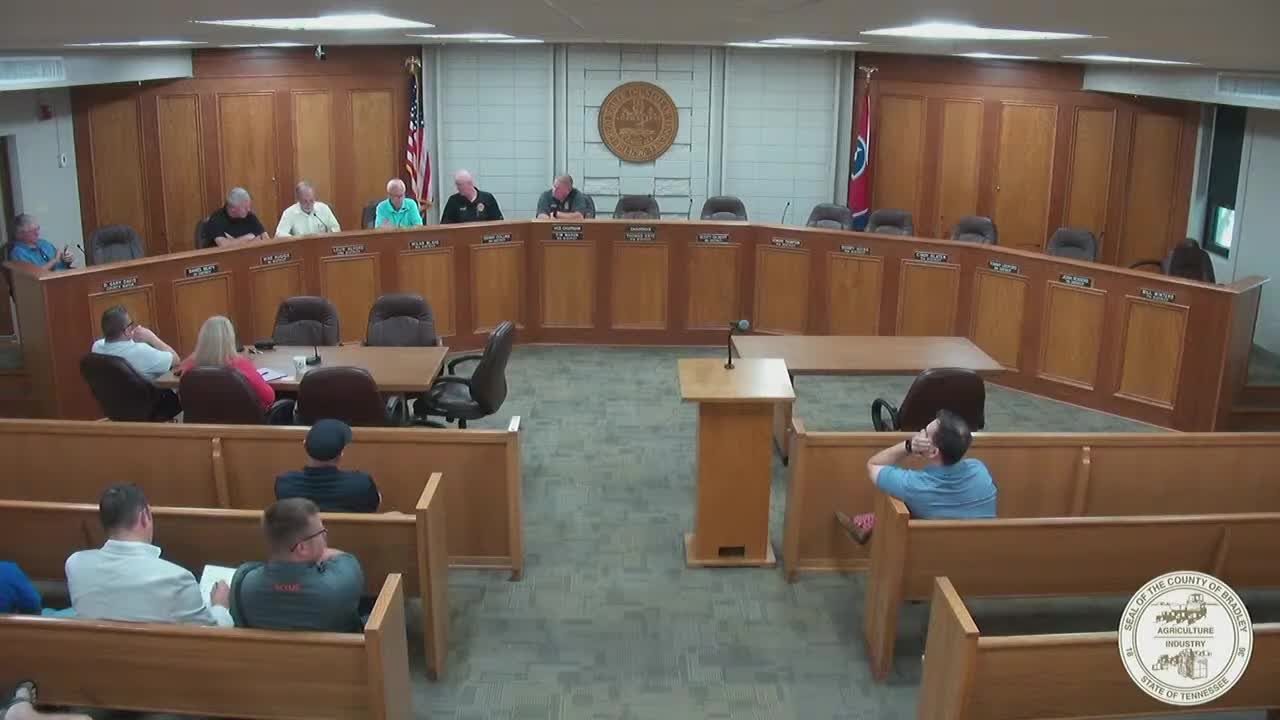Cleveland City Council approves annexation plan to support Bradley County fire funding
September 05, 2025 | Bradley County, Tennessee
This article was created by AI summarizing key points discussed. AI makes mistakes, so for full details and context, please refer to the video of the full meeting. Please report any errors so we can fix them. Report an error »

In a recent meeting of the City/County Fire Tax Committee in Bradley County, Tennessee, discussions centered around the implications of new urban growth boundaries and their potential impact on fire tax revenue. The committee reviewed a draft proposal aimed at addressing concerns related to annexation of properties between the old and new urban growth boundaries, particularly in light of the City of Cleveland's plans to annex these areas.
The proposal outlines a strategy to mitigate the financial impact on the county's fire department, which relies on fire tax revenue. As properties are annexed, the county could face a significant loss of this revenue. To counteract this, the proposal suggests that the city will hold the county harmless for two fiscal years following annexation. This arrangement is designed to provide the county with time to adjust to the revenue changes without experiencing a midyear financial shortfall.
Key points discussed included the methodology for prorating property taxes in the first year after annexation, which could vary based on the timing of the annexation. The committee emphasized the importance of this agreement, as it aims to ensure that the county's fire services remain adequately funded during the transition period.
Additionally, while the annexation may lead to a loss of fire tax revenue, it is expected to result in an overall increase in taxable property value and property tax revenue due to the development of newly annexed areas that will gain access to sewer utilities. This dual impact highlights the complexity of urban growth and its financial implications for local governance.
The meeting underscored the necessity for collaboration between the city and county to navigate these changes effectively. As the City of Cleveland moves forward with its annexation plans, the committee's discussions will play a crucial role in shaping the financial landscape for fire services in Bradley County. The next steps will involve further review of the proposal and continued dialogue to ensure that both the city and county can adapt to the evolving urban environment.
The proposal outlines a strategy to mitigate the financial impact on the county's fire department, which relies on fire tax revenue. As properties are annexed, the county could face a significant loss of this revenue. To counteract this, the proposal suggests that the city will hold the county harmless for two fiscal years following annexation. This arrangement is designed to provide the county with time to adjust to the revenue changes without experiencing a midyear financial shortfall.
Key points discussed included the methodology for prorating property taxes in the first year after annexation, which could vary based on the timing of the annexation. The committee emphasized the importance of this agreement, as it aims to ensure that the county's fire services remain adequately funded during the transition period.
Additionally, while the annexation may lead to a loss of fire tax revenue, it is expected to result in an overall increase in taxable property value and property tax revenue due to the development of newly annexed areas that will gain access to sewer utilities. This dual impact highlights the complexity of urban growth and its financial implications for local governance.
The meeting underscored the necessity for collaboration between the city and county to navigate these changes effectively. As the City of Cleveland moves forward with its annexation plans, the committee's discussions will play a crucial role in shaping the financial landscape for fire services in Bradley County. The next steps will involve further review of the proposal and continued dialogue to ensure that both the city and county can adapt to the evolving urban environment.
View full meeting
This article is based on a recent meeting—watch the full video and explore the complete transcript for deeper insights into the discussion.
View full meeting
